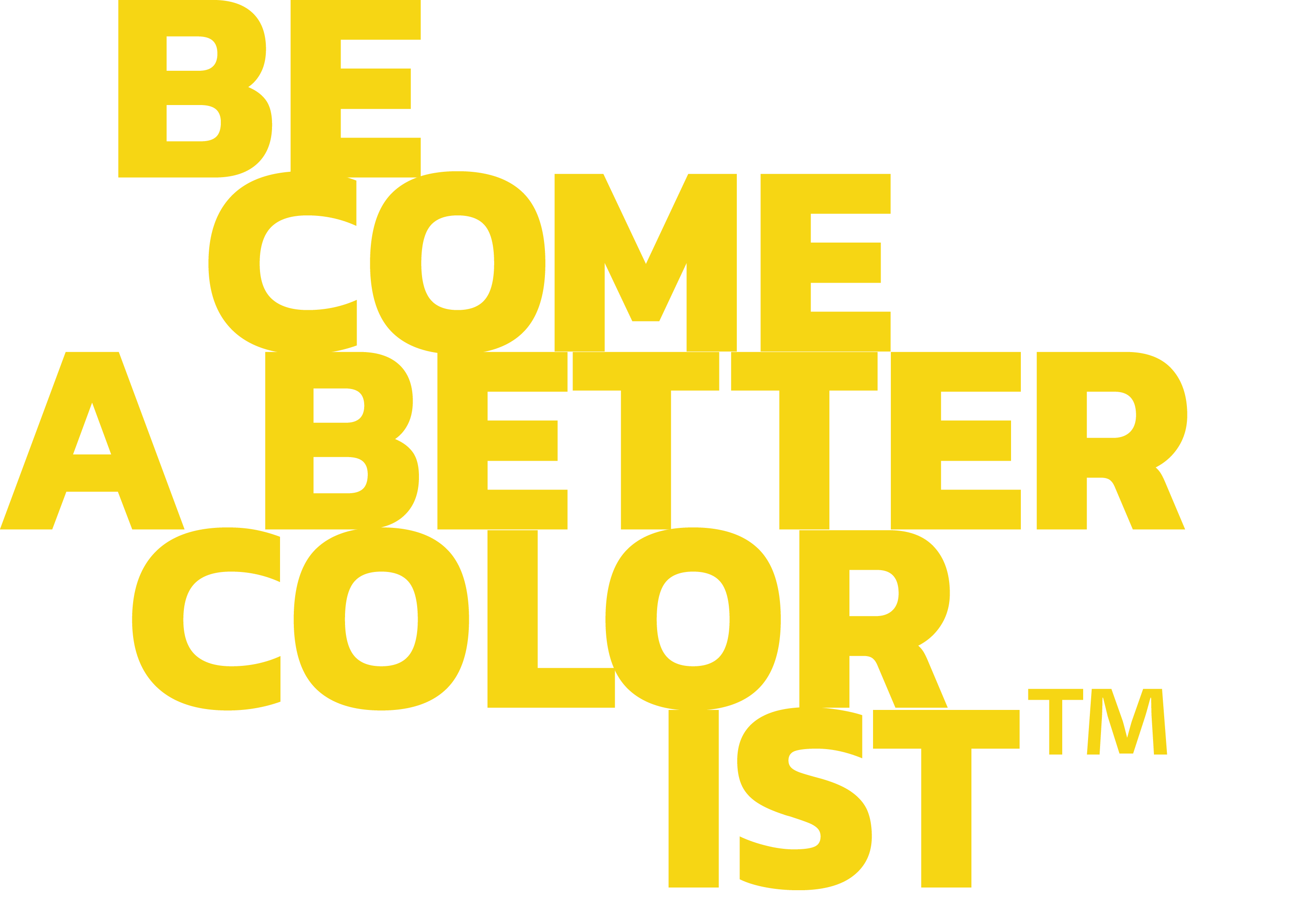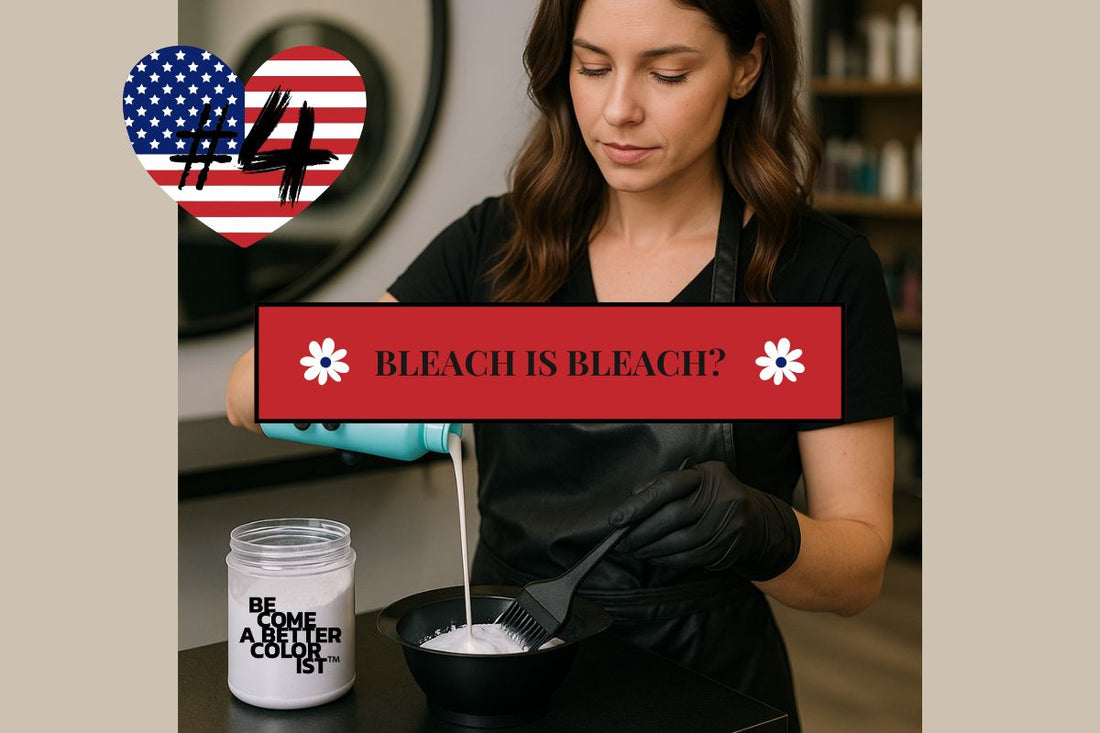This blog post is also available as an audio blog.
👉 Click here to listen on Spotify: #4 Bleach is Bleach? As an audio blog on Spotify
What really happens when you bleach hair – and why it matters
You’re standing there with the bleach in your hand.
A client wants to go lighter – maybe just a few highlights, maybe a full makeover.
You reach for the bleach automatically, almost without thinking. That’s what you always do. And it works, right?
Because today, bleach is used for almost everything: highlights, soft balayage, creative color, color removal.
It’s become the obvious choice – almost standard – no matter the starting point.
And of course, you know what bleach is. It lifts. It lightens. It gets the job done.
But do you know what’s actually happening inside the hair?
How bleach affects the structure – not just the tone?
Why some hair breaks, even though you did “everything right”?
Or why the hair feels stronger right after, but suddenly weaker a week later?
The truth is: bleach has become everyday.
But our understanding of what we’re working with – hasn’t kept up.
What actually bleaches?
If you ask hairdressers what bleach does, it’s not uncommon to hear: “It lightens the hair.”
Which is technically true. But it’s a simplification. More often, you’ll hear: “It’s the hydrogen peroxide that bleaches the hair.”
That’s where things start to go wrong.
Hydrogen peroxide definitely plays an important role – it delivers oxygen to the process. But it’s not what breaks down the pigment.
The actual bleaching happens through the persulfates (ammonium, potassium, sodium) in the bleaching product.
They are the ones attacking the melanin structure, breaking bonds, and destroying pigment molecules. That’s where it happens.
Understanding the difference is crucial. Not to pick the right tub – but to understand what’s happening in the hair. What it can handle. What’s reasonable. And what you can actually influence – and what you can’t.
Strong smell = strong bleach?
Another common misconception is about smell.
How many times have you smelled a bleach and thought: “This definitely contains ammonia”?
Or become suspicious when an “ammonia-free” product smells strong?
But a strong smell doesn’t mean ammonia. Persulfates smell. Buffering alkaline agents smell. Thickeners, pH adjusters – many of them have strong odors.
It’s easy to rely on feeling. But chemistry isn’t a feeling.
Chemistry is fact. And you won’t find it on the front label – but in the ingredient list.
“Up to 9 levels of lift” – on what hair?
You’ve seen it on packaging, catalogs, sales presentations.
“Up to 9 levels of lift.” It sounds impressive – but what does it actually mean?
Very little, unless you know the context:
• On what hair was it tested?
• Under what conditions?
• How is the lift measured?
And most importantly: what does it mean in real life – on the hair in front of you?
What actually determines the result
It’s easy to think that the product or the brand of bleach determines the result.
But it doesn’t. It’s about the hair’s conditions – and your knowledge.
What influences the result:
• The lightness level you stop at
This is where you determine the tone – not in the product, but in the timing.
• The amount of eumelanin and pheomelanin in the hair
Eumelanin (dark pigment) breaks down more easily. Pheomelanin (red/yellow pigment) breaks down more slowly and is more resistant to lightening.
• The coarseness of the hair strand
Coarse hair requires more time and power – and some products have trouble penetrating.
• The pH and consistency of the product
A more fluid formula can penetrate deeper. A thick cream might stay more superficial – which can be desirable at times.
• What’s on the hair before you start
Silicones, color-depositing masks, metal residues, and minerals can affect both the reaction and the result. A “clean canvas” is key for the bleach to do its job.
How you apply matters too
It’s not enough to mix it right and choose the right volume – the amount of product and your application technique matter a lot.
A multi-level lift requires generous amounts of bleach to actually push through the hair.
If you apply too little, the process stalls before completion. Want an even, controlled lift? Then you need to work with enough product and the right saturation.
Higher volume = more damage – not always more lift
A common misconception is that a higher percentage of hydrogen peroxide gives a lighter result.
That’s not true.
All a higher volume does is speed up the process – but faster doesn’t mean better.
The faster the oxidation, the more stress on the hair.
You can often achieve the same result with a lower volume and longer time – but with less damage and better control.
It’s not just about lightening – it’s about doing it gently.
Do you weigh or eyeball it?
Many mix bleach “by feel” or by sight.
But small differences in mixing ratios affect pH, consistency, and processing time.
When you weigh and work precisely, you gain control – and can repeat a successful formula.
Guesswork doesn’t belong in the bowl.
Types of bleach – not better or worse, just different
There are many bleaches. Here’s an overview of the most common:
• Powder bleach
The classic. Most used. High performance, requires skill. Common for global bleach, foils, and color removal.
• Balayage bleach
Thicker powder with more structure. Stays in place, lifts slower. Good for freehand techniques.
• Clay bleach
Dries on the surface, seals in moisture, lifts slowly and with control. Often used for face-framing and soft transitions.
• Paste/cream bleach
Comes ready-made in a tube or jar. Often marketed as gentle or caring. Provides less lift but works well on fragile hair and root bleaching.
They contain the same bleaching agents – persulfates – but in different amounts and with different caring ingredients.
It’s about knowledge – not intuition
Bleach is a powerful tool. But it’s also a tool that’s easily misunderstood when we rely on habit, feeling, or marketing.
When you understand what’s actually happening in the hair –
what affects the structure, what breaks the pigment, what controls the result –
you don’t just create better color.
You become more confident. You communicate more clearly. You make better decisions – for both the hair and the client.
Do you want to understand bleach for real?
In Become A Better Colorist you don’t just get the theory behind bleaching.
You get the tools to use it in real life.
Understand pigment, pH, structure, and technique – so you can make your own decisions, create lasting results, and grow as a colorist.
Want to get started?
- Begin with Become A Better Colorist – your colorpedia in book form.
- Want to go further? Take The Power of the Product – Lighten Hair the Right Way.
- Want to get certified? Then our Mastervision series is the next step. Contact info@becomeabettercolorist.com for more information.
Because it’s not the product on the shelf that determines who you become.
It’s the knowledge you bring to the chair.
/ Camilla Rörstrand

